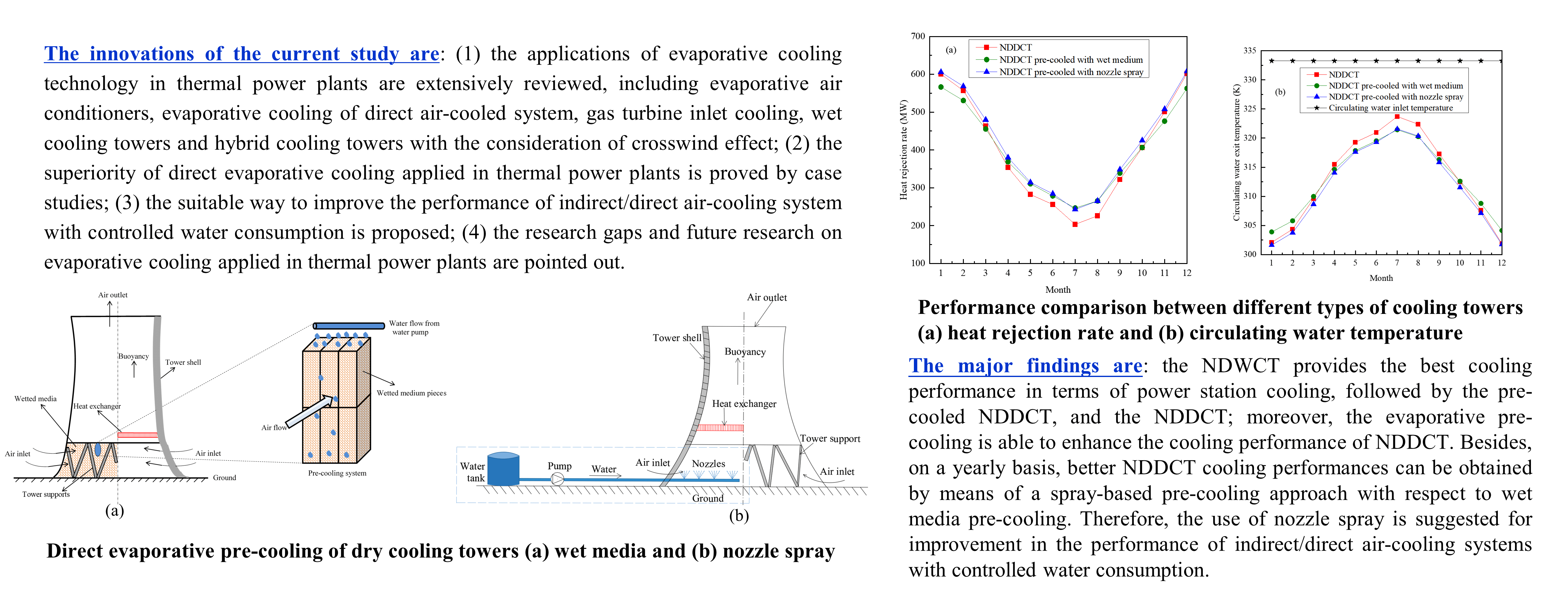 Open Access
Open Access
REVIEW
Evaporative Cooling Applied in Thermal Power Plants: A Review of the State-of-the-Art and Typical Case Studies
1 Shandong Engineering Laboratory for High-Efficiency Energy Conservation and Energy Storage Technology & Equipment, School of Energy and Power Engineering, Shandong University, Jinan, 250061, China
2 College of Energy and Power Engineering, Changsha University of Science & Technology, Changsha, 410114, China
3 Technical Research and Development Department, Shandong Taiwang Cooling Equipment Co., Ltd., Xintai, 271221, China
4 Shandong Key Laboratory of Key Technology of Tire Mould, Himile Mechanical Science and Technology (Shandong) Co., Ltd., Weifang, 261550, China
5 School of Urban Planning and Municipal Engineering, Xi’an Polytechnic University, Xi’an, 710048, China
* Corresponding Author: Suoying He. Email:
Fluid Dynamics & Materials Processing 2023, 19(9), 2229-2266. https://doi.org/10.32604/fdmp.2023.027239
Received 21 October 2022; Accepted 08 February 2023; Issue published 16 May 2023
Abstract
A review is conducted about the application of the evaporative cooling technology in thermal power plants. Different case studies are considered, namely, evaporative air conditioners, evaporative cooling in direct air-cooled systems, gas turbine inlet cooling, wet cooling towers, and hybrid cooling towers with a crosswind effect. Some effort is provided to describe the advantages related to direct evaporative cooling when it is applied in thermal power plants and illustrate the research gaps, which have not been filled yet. In particular, typical case studies are intentionally used to compare the cooling performances when direct evaporative cooling is implemented in different types of cooling towers, including the natural draft wet cooling tower (NDWCT) and the pre-cooled natural draft dry cooling tower (NDDCT). It is shown that the NDWCT provides the best cooling performance in terms of power station cooling, followed by the pre-cooled NDDCT, and the NDDCT; moreover, the evaporative pre-cooling is able to enhance the cooling performance of NDDCT. Besides, on a yearly basis, better NDDCT cooling performances can be obtained by means of a spray-based pre-cooling approach with respect to wet media pre-cooling. Therefore, the use of nozzle spray is suggested for improvement in the performance of indirect/direct air-cooling systems with controlled water consumption.Graphic Abstract

Keywords
Cite This Article
 Copyright © 2023 The Author(s). Published by Tech Science Press.
Copyright © 2023 The Author(s). Published by Tech Science Press.This work is licensed under a Creative Commons Attribution 4.0 International License , which permits unrestricted use, distribution, and reproduction in any medium, provided the original work is properly cited.


 Submit a Paper
Submit a Paper Propose a Special lssue
Propose a Special lssue View Full Text
View Full Text Download PDF
Download PDF Downloads
Downloads
 Citation Tools
Citation Tools